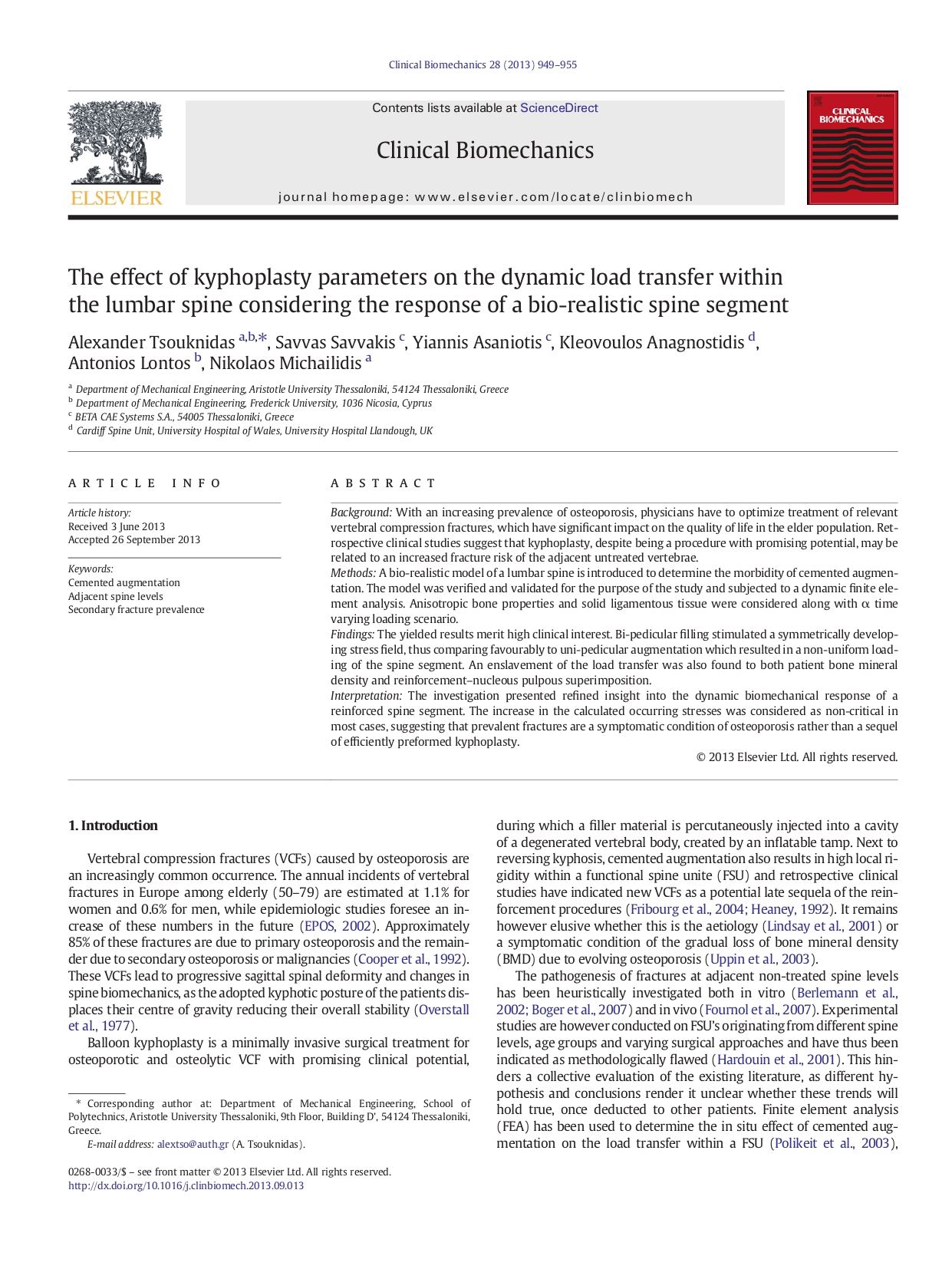Τitle
The effect of kyphoplasty parameters on the dynamic load transfer within the lumbar spine considering the response of a bio-realistic spine segment
The effect of kyphoplasty parameters on the dynamic load transfer within the lumbar spine considering the response of a bio-realistic spine segment
Clinical Biomechanics, 28 (9-10), pp. 949-955.
Background: With an increasing prevalence of osteoporosis, physicians have to optimize treatment of relevant
vertebral compression fractures, which have significant impact on the quality of life in the elder population. Retrospective clinical studies suggest that kyphoplasty, despite being a procedurewith promising potential,may be
related to an increased fracture risk of the adjacent untreated vertebrae.
Methods: A bio-realistic model of a lumbar spine is introduced to determine themorbidity of cemented augmentation.
The model was verified and validated for the purpose of the study and subjected to a dynamic finite element
analysis. Anisotropic bone properties and solid ligamentous tissue were considered along with α time
varying loading scenario.
Findings: The yielded resultsmerit high clinical interest. Bi-pedicular filling stimulated a symmetrically developing
stress field, thus comparing favourably to uni-pedicular augmentationwhich resulted in a non-uniformloading
of the spine segment. An enslavement of the load transfer was also found to both patient bone mineral
density and reinforcement–nucleous pulpous superimposition.
Interpretation: The investigation presented refined insight into the dynamic biomechanical response of a
reinforced spine segment. The increase in the calculated occurring stresses was considered as non-critical in
most cases, suggesting that prevalent fractures are a symptomatic condition of osteoporosis rather than a sequel
of efficiently preformed kyphoplasty.
